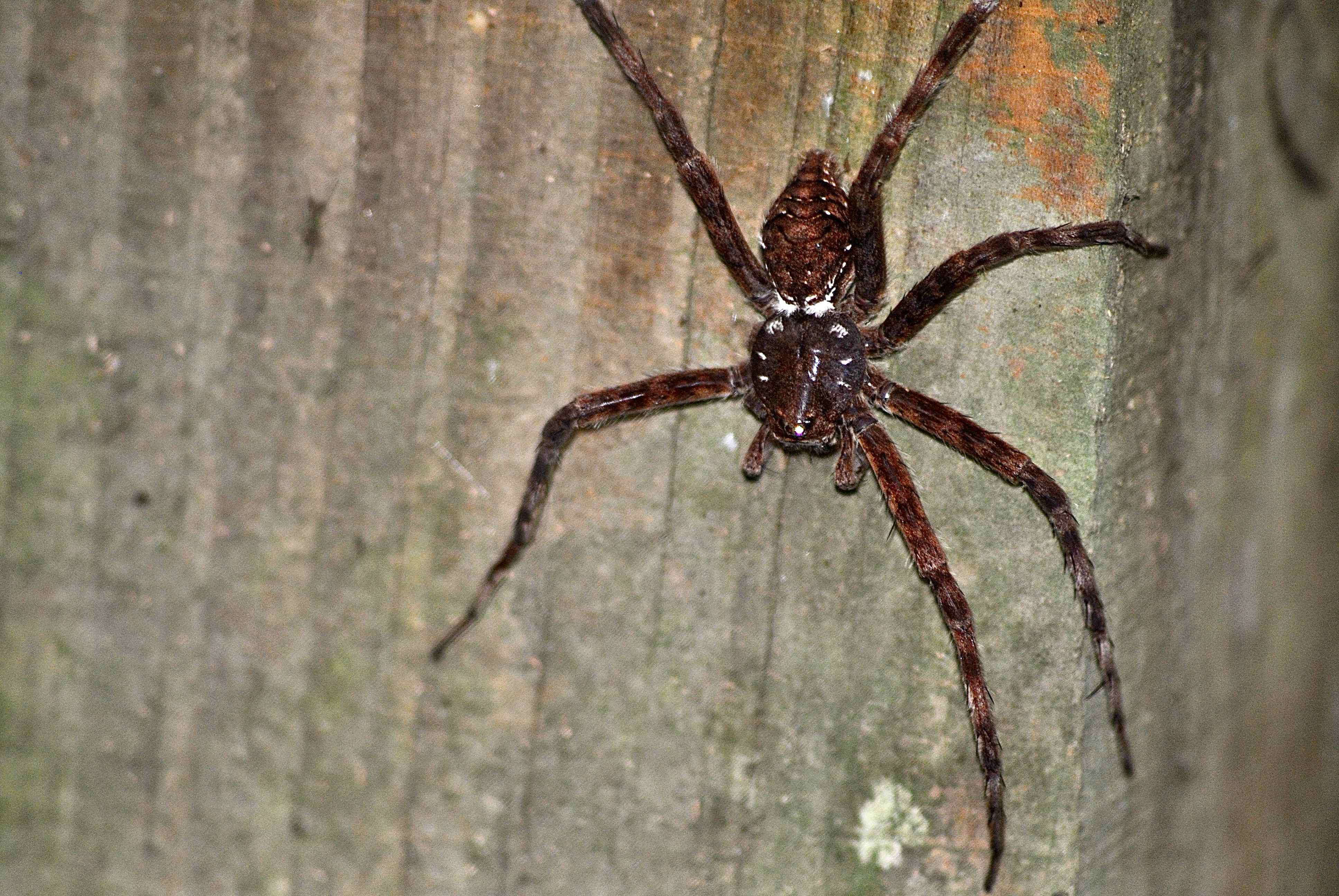
White-banded fishing spider, photographed at Corkscrew Swamp Sanctuary, Naples, Collier County, in October 2013.
Fishing spiders come by their name honestly. They do in fact forage by fishing, sometimes even catching fish, albeit small fish.
Our guy, the white-banded fishing spider, Dolomedes albineus, is more of land lubber, foraging more on terra firma than most of its cousins.
It’s found over most the eastern United States roughly from Texas into New York and Massachusetts, including, of course, Florida. It’s one eight fishing spiders found in North America north of Mexico.
White-banded fishing spiders are large as spiders go: the bodies of females can be nearly an inch long, males a little more than half that. Counting its legs, females can reach three inches long.
They can be quite variable in color, ranging from gray brown to green, but usually has a white band along the front edge of the face.
As might be expected by the name, white-banded fishing spiders are associated with places, but they’re often found on tree stumps, walls and, like our guy above, on posts. (They’re not usually not quite as beat up as our friend above.)
Fishing spiders will sit on bodies of water, spread out, waiting, feeling for the vibrations of a hapless insect that’s fallen into the water, which it then snaps up for dinner. They also can take an occasional fish. But as we noted above, white-banded fishing spiders are more terrestrial. They’ll forage on water, but do most of their work on land, prowling about the ground for flies, moths, beetles and other tasty morsels.
Which brings up the subject of sex. Mating among spiders tends to be a tricky thing for the guys of the species, the best-known example being the black widow spider, the female immediately devours the male after fertilization.
Thing is, when a hunting female encounters a female, its instinct may be to see it as food first, a potential mate second. It also might encounter a male suitor, find it not quite meeting its standards and eating it instead of mating with it, what might be the ultimate form of rejection.
Females who do successfully mate carry their egg sac between their fangs.
White-banded fishing spiders are members of Pisauridae.
Corkscrew Swamp Sanctuary
